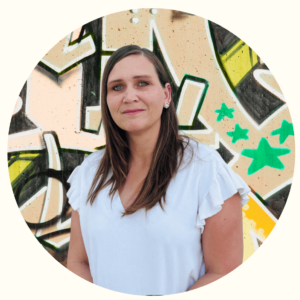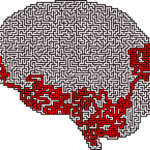Questioning The Classification of Types of Diabetes

So, I was reading this paper, this morning (yes, the actual paper — old school!) and came across an article claiming that Type 1 Diabetes might actually be two different conditions. Intriguing, right?
Apparently, researchers publishing in Diabetologia found some big differences between people diagnosed before age seven and those diagnosed after age thirteen.
Here’s what they found:
Before age seven → the immune system goes on full attack mode, wiping out insulin-producing beta cells and leaving hardly any insulin production behind. This group was labelled Type 1 Diabetes Endotype 1 (T1DE1).
After age thirteen → a gentler immune response, fewer immune cells attacking the pancreas, and still some functioning insulin-producing cells hanging on. This group became Type 1 Diabetes Endotype 2 (T1DE2).
The researchers got especially excited about that second group. Those beta cells weren’t destroyed — just… asleep. Dormant. The idea is that, in future, maybe we could find a way to wake them up.
People diagnosed between ages 7 and 12 were a mix of both types. Not as predictable, but still roughly fitting into one camp or the other.
So, the takeaway? The scientists from the University of Exeter suggested that future diabetes treatments might need to be tailored differently depending on age at diagnosis. In other words — there might not be a one-size-fits-all cure for Type 1 Diabetes.
My Gut Reaction
I’ll be honest — something about this doesn’t sit quite right with me.
First, I thought about my own family. I was diagnosed at 18 months. My sister at 9. My aunt at 19.
So according to this study, our family just happens to conveniently illustrate all three age categories: me as T1DE1, my sister in the “middle mix,” and my aunt as T1DE2.
Really? That feels a bit too tidy to be true.
Then there’s another layer. The researchers compared their findings with a 2018 Scandinavian study that identified five different subtypes of diabetes — based on things like age of onset, BMI, blood sugar levels, and insulin sensitivity.
One of those five matched one of the new endotypes, so now they’re suggesting maybe there are actually six types of Type 1 Diabetes.
At this point, my brain is going, Wait, what?
When Did Diabetes Get So Complicated?
Once upon a time, it was simple. There was juvenile-onset diabetes and adult-onset diabetes.
Then scientists realised you could develop the autoimmune kind at any age, so they renamed them Type 1 and Type 2.
Easy enough.
But then along came Type 1.5 Diabetes (also known as LADA) — autoimmune like Type 1, but slower to progress, like Type 2.
And now, if we take into account this new study and the Scandinavian one, the list might look something like this:
Type 1 Endotype 1 Diabetes
Type 1 Endotype 2 Diabetes
Five Scandinavian subtypes
Type 1.5 (LADA) Diabetes
Type 2 Diabetes
MODY Diabetes (which already has 11 subtypes)
Nineteen different “types” of diabetes?! My intuition is screaming. Something’s off.
It reminds me of how scientists can sometimes mistake different stages of one process for completely different things. Let me explain what I mean.
My Little Plant Analogy 🌱
Imagine I’m an explorer in a new land.
On the first day, I find a plant with two small green leaves and a closed bud. I take a picture and call it Plant One.
The next day, I find another plant — same kind of leaves, but this one has a big yellow flower. It’s buzzing with bees and covered in pollen. I take another photo and call it Plant Two.
I go home and proudly present my discovery of two exciting new plants… until someone points out that they’re probably just the same plant, one in bud and one in bloom.
What if that’s what’s happening here?
Maybe T1DE1 and T1DE2 aren’t two different diseases at all — maybe they’re just different points along the same journey.
Because here’s something interesting: this study used pancreatic tissue samples from people who died in the 1950s alongside blood samples from people living today. That means they’re comparing snapshots in time — not tracking how diabetes actually evolves within the same person.
A static photo doesn’t tell the full story of a living, changing process.
And Then There's Emotion...
In my post ‘The Neuroscience of Diabetes’, I talked about how insulin is a neuropeptide — a molecule linked to emotion and brain signalling.
So, I have to ask: has anyone in these studies controlled for the emotional state of the people they’re studying? Because emotions directly affect hormonal and metabolic activity.
Obviously, the researchers couldn’t possibly know the emotional conditions of people who died in the 1950s. That alone introduces a huge confounding variable.
It’s like trying to study the ocean by scooping up a single cup of water and saying, “This is how the sea behaves.”
Also… Can We Please Retire the “Beta Cell Burnout” Story?
I noticed this study still relies on the Eisenbarth model of diabetes — the old idea that people with Type 1 eventually experience complete beta-cell “burnout.”
But as I mentioned in “What Is Type 1 Diabetes?”, newer research shows that beta cells don’t necessarily die off completely. Some hang on. Some recover. Some might even regenerate.
So, if that’s true, then defining two “endotypes” based on how many beta cells appear to have burned out feels… well, shaky.
Final Thoughts
I’m not dismissing this research — it’s fascinating stuff. But I do think we need to stay curious and cautious before we start carving Type 1 Diabetes into dozens of new subtypes.
What if instead of multiple diseases, it’s one complex, dynamic condition that looks different depending on age, genetics, environment, and emotion?
Maybe it’s not that we need more boxes to put people into — maybe we just need to understand the process better.

GET HEALINGT1D’S FUTURE ARTICLES IN YOUR INBOX!
Get the latest musings and findings straight to your email inbox.

Natalie is a blogger with Type 1 Diabetes. Natalie's special gifts are questioning the status quo and being a rebel. She is using these gifts to question medical 'knowledge' and find a true cure for Type 1 Diabetes.
Recent Comments:
- Sandra on Nutrition Update
- latestModapks on Daniel Darkes
- Natalie Leader on Daniel Darkes
- Senna on Daniel Darkes
- Sandra on High Blood Pressure




